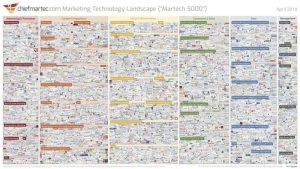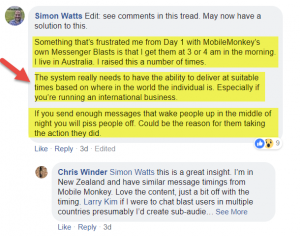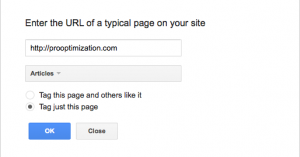What Should You Expect When Building a Website?

Most businesses need to build a website to be successful. You might be able to build a website using a free website builder and existing templates, but it might be better to work with a web development agency. If you go the latter route, what can you expect from the development process of building a website?
Why Website Builders May Not Be Good Enough
Before we get any further, let’s talk about why website builders may not be good enough for your website.
Free website builders are all over the place these days. Most of them follow the same formula, presenting you with a WYSIWYG (what you see is what you get) editor and hundreds of templates to choose from. In the span of an afternoon, even if you don’t have much website design or development experience, you can probably put a decent-looking website together.
But there are some problems inherent with this approach, including:
Creative Limitations
You’re going to suffer from severe creative limitations when building your website. Even if you’re willing to pay for a template, you’re still going to be working with templates primarily, meaning there are inherent restrictions on what you can do with your website. On top of that, there may be functional limitations for websites built with your free website builder of choice.
Lack of Expertise
Without the proper expertise and access to the right tools, it might take you a long time to develop your website – and when you’re done, you may not be satisfied with the finished results. The truth is, even though free website builders can be used by almost anyone, they still require a bit of expertise if you want to make the most of them. If you don’t have that expertise, you’ll neglect some of the most important and valuable features of the platform.
The Template Look
It’s also worth noting that millions of websites are now being built with free website builders, so they all look the same. Anyone experienced with these platforms can spot a website built with a template – and that’s not a good look for your business. You know that competitive differentiation is powerful, so it often pays to go above and beyond when developing your website.
Difficulty in Scaling
Free website builders can also make it difficult to scale your operations. If you decide to add a couple of new pages, it shouldn’t be a problem. Still, suppose you want to expand the functionality of your website, significantly increase its performance, or take the design in a fundamentally new direction. In that case, your free website builder may not be up to the task. Getting your website professionally designed and developed will give you much more flexibility in the future.
The Web Development Process: A High-Level View
The website development process, when working with a professional web developer, usually unfolds in a series of phases. Each phase sets out to accomplish a set of goals and builds upon the last phase. Depending on the nature of your website and the ebb and flow of your working relationship, each phase could last a matter of days or a few weeks. Generally, if everything goes smoothly, you can expect this entire process to last between six and eight weeks.
Let’s dig into each phase.
Phase One: Discovery
Phase one is discovery. During discovery, your website developer will be working with you to understand as much as possible about your brand and about your project. Designers, developers, and project managers may be in attendance during these meetings, taking notes, so they have the information they need to build your website properly.
During this time, you’ll likely go over the following and more:
Your brand.
What are the core elements of your brand identity? Which colors represent your brand? What is your brand personality? What should people think when they see your brand for the first time?
Your vision for the site.
What do you want your website to look like? How should it function? One of the best ways to explain this is to provide examples of existing websites that you already like.
Your existing site (if one exists).
Do you have a website already in place? If so, what don’t you like about it? What are you trying to improve?
Your content and materials.
Do you have existing materials you want to be worked into the website, such as existing content, photos, and design elements?
Phase Two: Architecture/Site Mapping
Phase two is architecture and site mapping. This is a relatively simple phase in which you and your web developer collaborate to come up with the overall architecture for your site. What is your website supposed to do? Which are the core pages that are going to serve as the foundation of your website? What kind of navigation is going to allow visitors to seamlessly flow from one page to the next?
At the end of this phase, you’ll be able to approve a simple diagram that shows the high-level overview of your website.
Phase Three: Wireframes
Next is wireframing. You can think of this as a rough draft of your website. Designers will work with the architecture and site map diagram to better understand what your site is going to look like, and they’ll use this information to create a skeletal framework for future design. It’s not going to look pretty at this point, but it is going to give you a sense of what your website will eventually look like.
Phase Four: Design
Your website is soon going to be the face of your brand. That’s why it’s important to build on your existing wireframes and flesh out a full design. Considering your brand, your goals, and the state of modern web design, your designers will work hard to design a site that accomplishes everything you want.
Phase Five: Content
With the design in place, you’ll need to add written content. Depending on your goals in the web developer you’re working with, you may be able to provide the content yourself or lean on existing copywriters within the agency to write the content for you.
Phase Six: Initial Development
If you like the way the website looks and you’re confident in the content, you’ll be ready to move to initial development. This is typically the longest phase of the process since it requires the most time and effort. Developers will be working diligently in the background to take the existing designs and turn them into a reality.
Phase Seven: Testing and QA
At this point, you’re ready to launch, right?
Not yet. During this phase, you and your web developer will go through the website inch by inch, testing it to make sure it works as intended. You’ll test it across a wide range of browsers and devices, interact with every element, and make sure the site is functionally perfect.
Phase Eight: Launch
You’ve set up your website to convert visitors, but will it? You’ll find out soon enough. Once you’ve completed testing and QA, you’ll be ready to formally launch your website. You’ll also probably have the chance to celebrate with the people who made it possible.
Keys to Success When Working With a Web Developer
If you want to see better results when working with a professional web developer, follow these important tips:
Choose the right partner.
There are many different web developers out there with varying levels of experience and professionalism. Choosing the right developer is essential if you want the best website and the best overall experience.
Set clear expectations.
Be clear and straightforward about what your expectations are. If you have desires for the website, talk about them. If you don’t like the wireframe during the wireframing phase, say something.
Communicate early and often.
Similarly, it’s important to communicate early and often. Your web developer wants you to be an active part of this process, so the more information you can provide, the better.
Get involved in testing.
From loading pages to experimenting with chatbots, testing is essential to make sure your website works as intended. Go out of your way to get involved with testing so you understand how your website works on a personal level.
Getting a website professionally designed and developed is a major step forward for your organization. Assuming you’re able to find the right partner and go through these phases as smoothly as possible, you could be up and running with a unique, scalable, impressive website in a matter of weeks.
Featured Image Credit: Christina Morillo; Pexels; Thanks!
The post What Should You Expect When Building a Website? appeared first on ReadWrite.
(42)
Report Post







